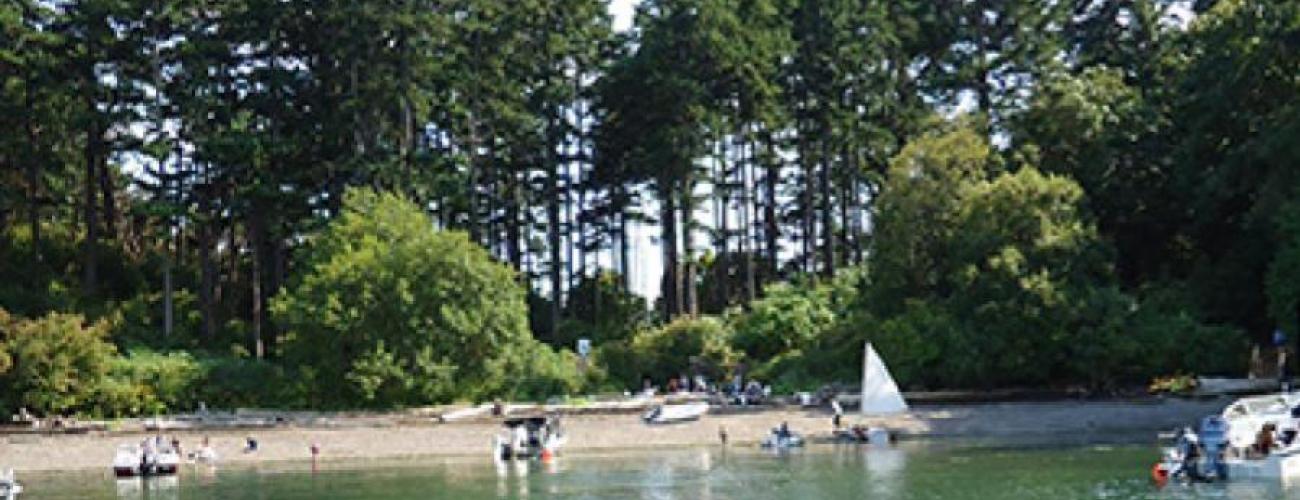Saddlebag Island Marine State Park Hisotry
Saddlebag Island Marine State Park lies on the western side of Padilla Bay in a chain of four small islands extending southeast from the corner of Guemes Island. It shares an unusual geologic history with Hope Island, another Washington Marine State Park about ten miles south, and Cypress Island, a Natural Resources Conservation Area six miles west.
Rock From Below Earth’s Crust
The bedrock of these islands is serpentinite, a metamorphic rock formed from Earth's mantle, the 1,800-mile-thick layer underneath our planet's crust. Serpentinite is created when the mineral olivine is heated and pressurized while simultaneously absorbing large amounts of water. The volume of the rock increases 30-40% and produces heat that powers hydrothermal vents on the sea floor above it. Saddlebag Island’s serpentinite is part of a larger assemblage of rocks that outcrop on nearby islands and collectively make up an ophiolite sequence, a distinctive formation of rocks formed where the sea floor has spread apart at a plate boundary.
Indigenous Land
The park lies within the traditional territory of Coast Salish Indigenous people whose present-day descendants include members of the Samish Indian Nation, Swinomish Indian Tribal Community, Suquamish Tribe, and Lummi Nation. Local tribes ceded ownership of the area to the US government in the Treaty of Point Elliot in 1855, keeping rights to harvest natural resources in their usual and accustomed places, including the waters surrounding Saddlebag Island. After government land surveys were completed, the land that makes up today’s Saddlebag Island Marine State Park passed into private ownership with a Cash Entry patent in 1891 to Amos Bowman, the founder of the City of Anacortes.
Becoming a Marine State Park
In the 1960s, the growth of recreational boating in Washington led the Washington State Parks and Recreation Commission (WSPRC) to explore ways to provide recreational opportunities for boaters, including marine parks accessible only by boat.
On November 3, 1964, Washington voters approved Initiative 215, the Marine Recreation Lands Act, which authorized a tax on fuel used in watercraft for the acquisition of land for marine recreational purposes. In 1966, Saddlebag Island was listed as one of the five highest priority areas for acquisition, due to its proximity to the city of Anacortes and protected moorages on both the north and south shores.
The WSPRC began discussions with the private landowner in 1968 but were not able to reach agreement on a purchase price until 1974.
In 1979, the WSPRC endorsed inclusion of Saddlebag Island Marine State Park in the Padilla Bay National Estuarine Research Reserve, dedicated to research, stewardship, and education about the fragile ecosystem of the bay. Padilla Bay is a massive eelgrass meadow used as a nursery by juvenile salmon, crab and herring.
Sharing the histories of Washington’s state parks is an ongoing project. Learn more here.

